-
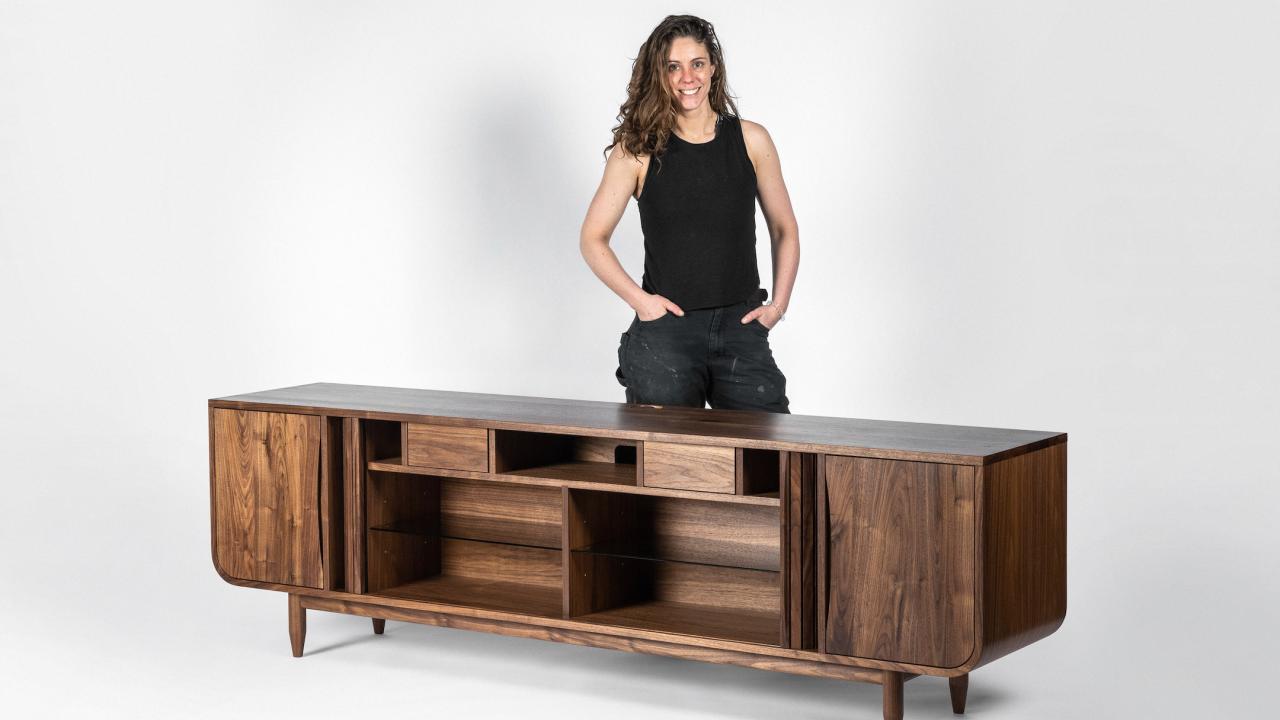
-
Final Folio
In the 2023 Australian Maker of the Year Awards, the top gong in the tertiary student category went to Melbourne-based furniture apprentice Jess Currie. This was the second accolade for Currie who had already won the Melbourne Polytechnic Apprentice of the Year prize earlier in the year. Employed at Beeline Design, housed in Australia’s oldest crafts co-operative, Worco in Thomastown, Victoria. Currie is conscious of how the culture created by Beeline owners, Adam Brislin and Lucy Grant, enabled her to achieve her ambitious final folio project – the Laika sideboard.
With a degree in English and visual culture under her belt from the University of Western Australia, Currie moved to Melbourne to continue her studies but felt unfulfilled. Describing herself as having always had ‘a bit of a passion for making things’ she followed a short stint making homewares with a new role at Beeline. “When I started there I realised there was a bunch of stuff that I needed to know about if I wanted to make this my career – like using a panel saw, a drop saw, some basic hand tools and I realised the best and fastest way to do this was to do a pre-apprenticeship to round out my skills and knowledge and be more helpful at work”. Realising the benefit of her new skills, Beeline applied to take Currie on as an apprentice. “I was the first apprentice of a WORCO business and also first for Beeline” adds Currie.
Laika was the culmination of four years of study at Melbourne Polytechnic. “Basically, everything I learnt is in that design” she says. “I needed a unit for my TV, speaker and record player but also wanted to create something that can just exist as a beautiful piece of furniture in its own right. I also wanted to challenge myself. For example, I’d never made a tambour and thought if not now, then when?”.
What followed was a year of commitment each evening after work focussing on Laika. Currie has the perfectionist streak that is critical to meet the high standards required in fine furniture design and manufacturing. She says Brislin not only offered sound design advice but was also “Kind enough to let me have some space and, as I made it at work, I was using the tools I used every day”. This freedom provided the mental space for this American walnut masterpiece to be realised.
Like generations of furniture makers around the world, Currie fell in love with the warm and dark tones of American black walnut, which she describes as “slightly flecked with purple and honey tones”. She also found it easily workable “It’s beautiful to cut, no tears or breaks. It chisels and planes beautifully and I was amazed how I’d machine it and it would stay flat even though I was working across seasons. We’d done one job before that used American walnut and I thought ‘this is what I have to use’, it’s my final piece and I wanted to celebrate that”. The sideboard is finished with a clear Rubio monocoat “it brings out the honey tones without changing the colour. It’s timber as it’s meant to look. Don’t try and change it!” she adds.
Currie was also conscious of the economic, environmental and ethical value of the material she chose. Having rejected teak for ethical reasons she saved for this premium. American hardwood species. Following a mantra of ‘use sustainable materials sustainably’ she also took care with a detailed cutting list “at our workshop every offcut is used” she says, “we save everything and think about how I use each piece, for example the legs are offcuts from the top”.
The name Laika certainly has a mid-century feel. Named after the first dog to make an orbital spaceflight in 1957, the piece even has its own Instagram account (@finalfolio) documenting the painstaking and loving process of its birth. Whilst it may be her final folio, given Currie’s obvious talent, it is more likely to be the first of many award-winning pieces we will see from this emerging designer maker.
-
-
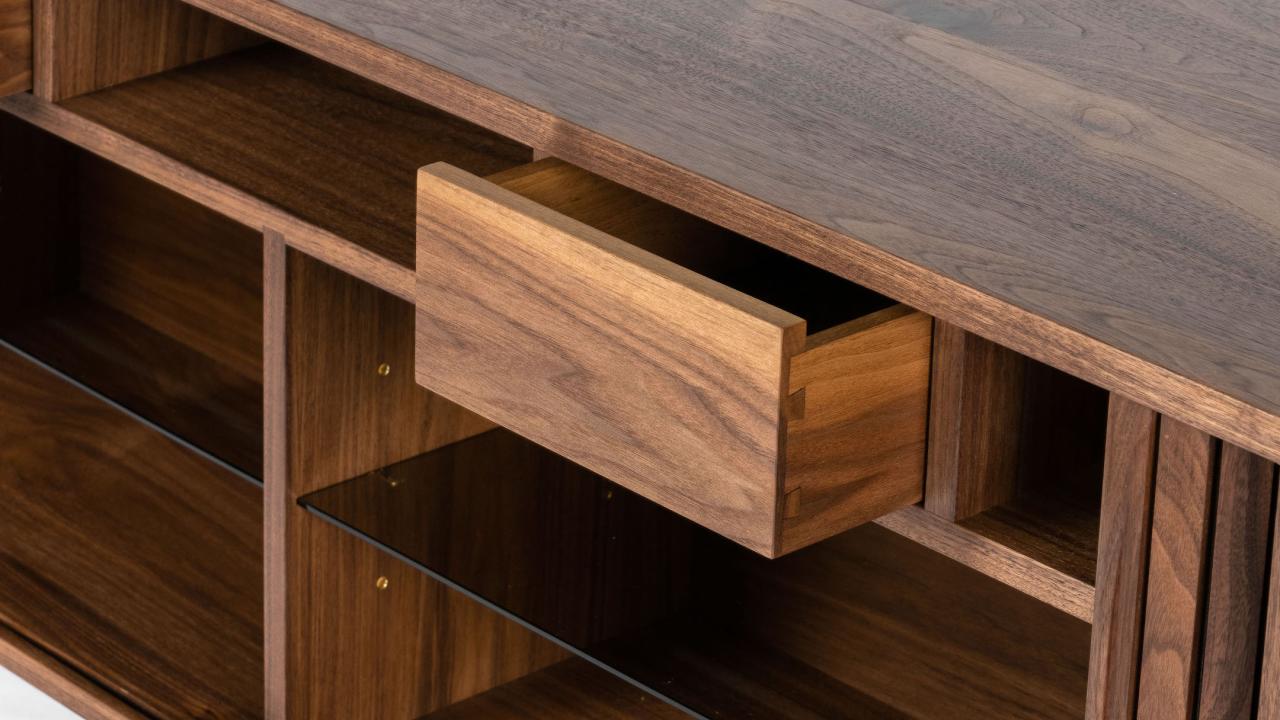
-
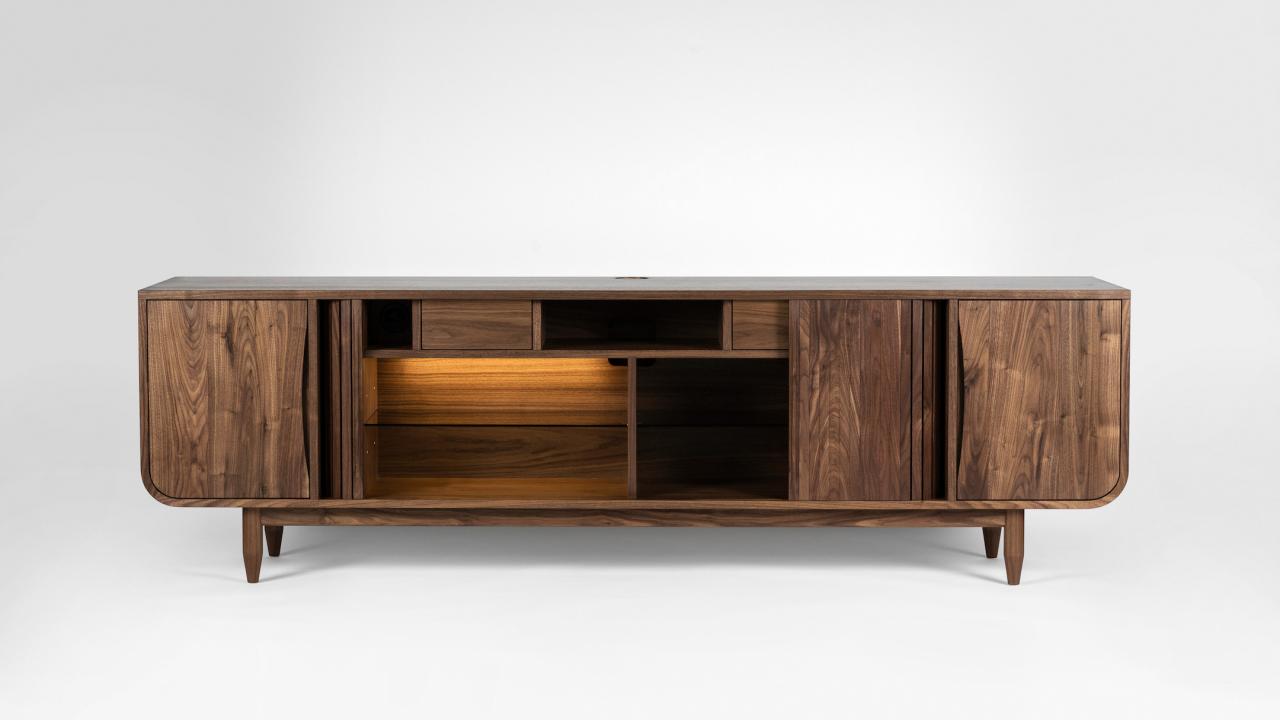
-
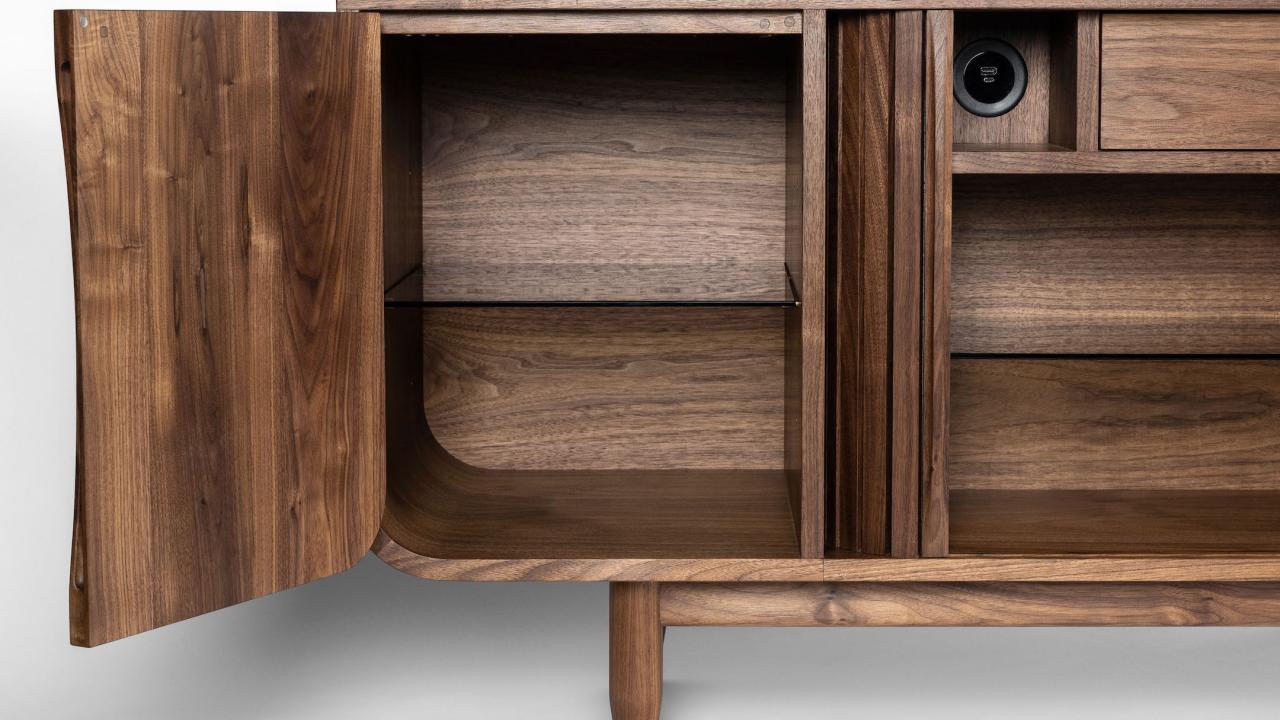
-
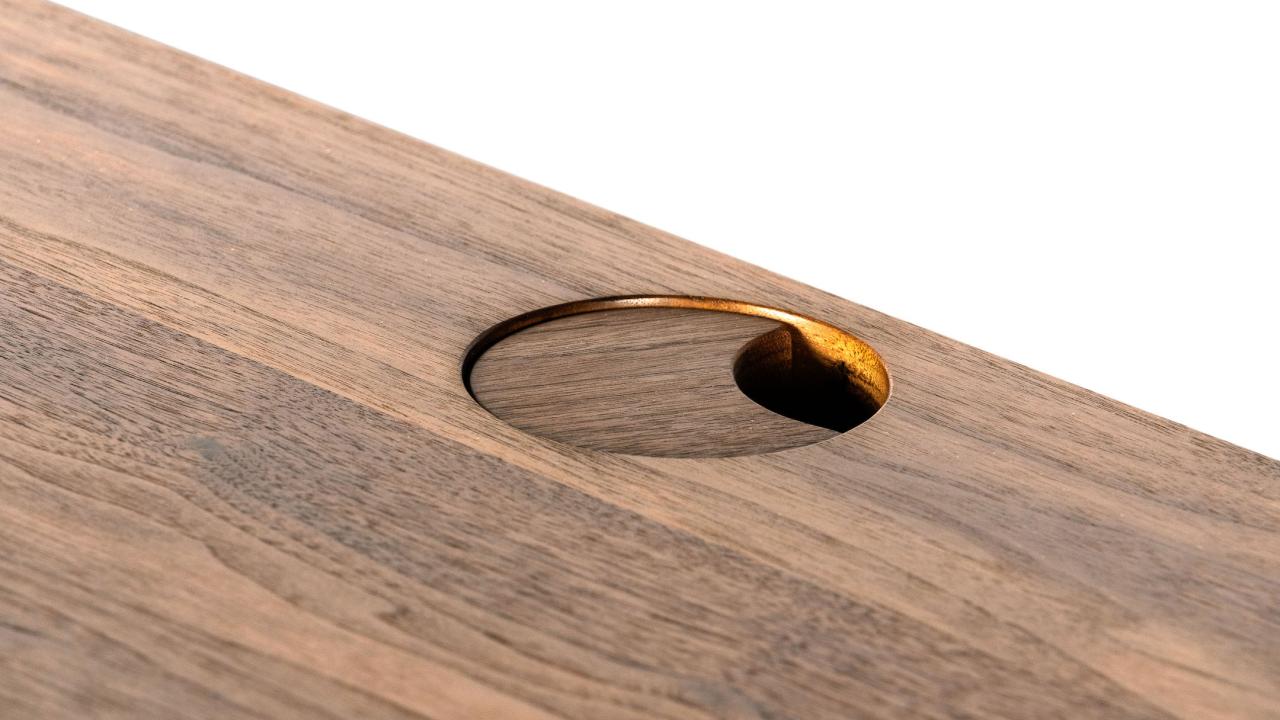
In the 2023 Australian Maker of the Year Awards, the top gong in the tertiary student category went to Melbourne-based furniture apprentice Jess Currie. This was the second accolade for Currie who had already won the Melbourne Polytechnic Apprentice of the Year prize earlier in the year. Employed at Beeline Design, housed in Australia’s oldest crafts co-operative, Worco in Thomastown, Victoria. Currie is conscious of how the culture created by Beeline owners, Adam Brislin and Lucy Grant, enabled her to achieve her ambitious final folio project – the Laika sideboard.
With a degree in English and visual culture under her belt from the University of Western Australia, Currie moved to Melbourne to continue her studies but felt unfulfilled. Describing herself as having always had ‘a bit of a passion for making things’ she followed a short stint making homewares with a new role at Beeline. “When I started there I realised there was a bunch of stuff that I needed to know about if I wanted to make this my career – like using a panel saw, a drop saw, some basic hand tools and I realised the best and fastest way to do this was to do a pre-apprenticeship to round out my skills and knowledge and be more helpful at work”. Realising the benefit of her new skills, Beeline applied to take Currie on as an apprentice. “I was the first apprentice of a WORCO business and also first for Beeline” adds Currie.
Laika was the culmination of four years of study at Melbourne Polytechnic. “Basically, everything I learnt is in that design” she says. “I needed a unit for my TV, speaker and record player but also wanted to create something that can just exist as a beautiful piece of furniture in its own right. I also wanted to challenge myself. For example, I’d never made a tambour and thought if not now, then when?”.
What followed was a year of commitment each evening after work focussing on Laika. Currie has the perfectionist streak that is critical to meet the high standards required in fine furniture design and manufacturing. She says Brislin not only offered sound design advice but was also “Kind enough to let me have some space and, as I made it at work, I was using the tools I used every day”. This freedom provided the mental space for this American walnut masterpiece to be realised.
Like generations of furniture makers around the world, Currie fell in love with the warm and dark tones of American black walnut, which she describes as “slightly flecked with purple and honey tones”. She also found it easily workable “It’s beautiful to cut, no tears or breaks. It chisels and planes beautifully and I was amazed how I’d machine it and it would stay flat even though I was working across seasons. We’d done one job before that used American walnut and I thought ‘this is what I have to use’, it’s my final piece and I wanted to celebrate that”. The sideboard is finished with a clear Rubio monocoat “it brings out the honey tones without changing the colour. It’s timber as it’s meant to look. Don’t try and change it!” she adds.
Currie was also conscious of the economic, environmental and ethical value of the material she chose. Having rejected teak for ethical reasons she saved for this premium. American hardwood species. Following a mantra of ‘use sustainable materials sustainably’ she also took care with a detailed cutting list “at our workshop every offcut is used” she says, “we save everything and think about how I use each piece, for example the legs are offcuts from the top”.
The name Laika certainly has a mid-century feel. Named after the first dog to make an orbital spaceflight in 1957, the piece even has its own Instagram account (@finalfolio) documenting the painstaking and loving process of its birth. Whilst it may be her final folio, given Currie’s obvious talent, it is more likely to be the first of many award-winning pieces we will see from this emerging designer maker.